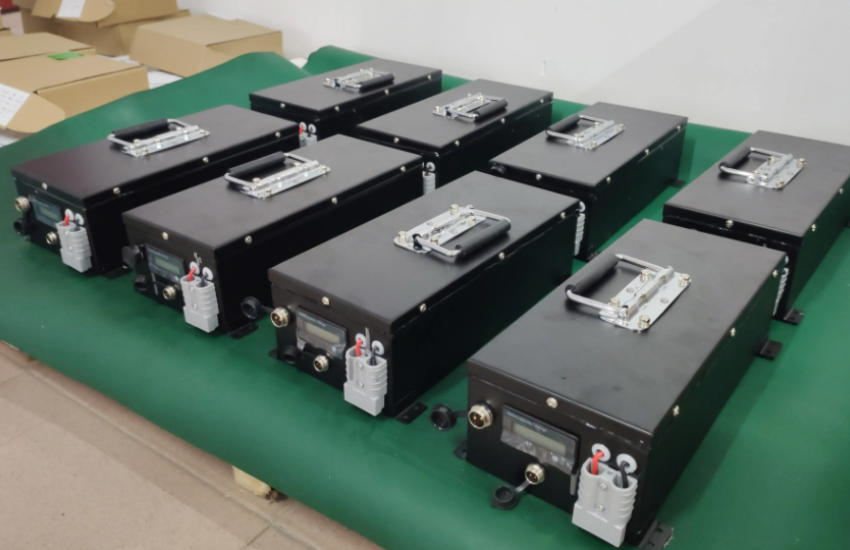Correct charging method of lithium iron phosphate battery
The full name of lithium iron phosphate battery is lithium iron phosphate lithium ion battery. Because its function is particularly suitable for power applications, the word "power" is added to the title, that is, lithium iron phosphate power battery. Some people also call it "lithium iron power battery", and do you know the charging skills of lithium iron phosphate? The following will introduce you to the charging skills of lithium iron phosphate batteries.
1. Before solving the problem, we first need to understand the structure and working principle of lithium iron phosphate battery. LiFePO4 is used as the positive electrode of the battery. It is connected to the positive electrode of the battery by aluminum foil. The ions can pass through but the electrons cannot. On the right is the negative electrode of the battery composed of carbon (graphite), which is connected to the negative electrode of the battery by a copper foil. Between the upper and lower ends of the battery is the electrolyte of the battery, and the battery is hermetically sealed by a metal casing. When the lithium iron phosphate battery is charged, the lithium ions in the positive electrode migrate to the negative electrode through the polymer barrier; during the discharge process, the lithium ions in the negative electrode migrate to the positive electrode through the barrier. Lithium-ion batteries are named after lithium ions move back and forth during charging and discharging.
2. When the battery is charged, lithium ions migrate from the surface of the lithium iron phosphate crystal to the surface of the crystal, enter the electrolyte under the action of the electric field force, pass through the barrier, and then move to the surface of the graphite crystal through the electrolyte, and then embed the graphite crystal. in the grid. At the same time, the electrons flow to the aluminum foil collector of the positive electrode through the conductor, flow to the copper foil collector of the negative electrode through the tab, battery pole, external circuit, negative pole, and negative ear, and then flow to the graphite negative electrode through the conductor, so that the The charge of the negative electrode is balanced. After the lithium ions are deintercalated from the lithium iron phosphate, the lithium iron phosphate is converted into iron phosphate.
3. When the battery is discharged, lithium ions are deintercalated from the graphite crystal, enter the electrolyte, pass through the barrier, and then move to the surface of the lithium iron phosphate crystal through the electrolyte, and then re-embedded into the lattice of lithium iron phosphate through the surface. . At the same time, the battery flows to the copper foil collector of the negative electrode through the conductor, flows to the aluminum foil collector of the positive electrode of the battery through the tab, battery negative pole, external circuit, positive pole and positive pole, and then flows to the iron phosphate through the conductor. The lithium positive electrode balances the charge of the positive electrode.
Matters needing attention: Remind that the lithium iron phosphate battery should pay attention to waterproof and dustproof when using it, so there should be no water in the place where it is stored, which will affect the function and service life of the battery.
Correct charging method of lithium iron phosphate battery pack
The charging of lithium iron phosphate battery packs advocates the use of CCCV charging methods, that is, constant current first and then constant voltage. Constant current advocates 0.3C. Constant voltage proposition 3.65. That is, in the process of constant current charging with 0.3C current, when the battery voltage reaches 3.65V, select 3.65V voltage constant voltage charging, and stop charging when the charging current is lower than 0.1C (or 0.05C), that is, the battery has been charged. overflowing. When you use a constant voltage power supply to charge, it also depends on the charging current. It is recommended not to charge with too high voltage. After adjusting the voltage, ensure that the charging current is below 0.5C, which is good for the battery.
Generally, the upper limit voltage of lithium iron phosphate battery charging is 3.7~4V, and the lower limit voltage of discharging is 2~2.5V. The five aspects of discharge capacity, median discharge voltage, charging time, constant current capacity percentage, and safety are considered, and constant current and constant voltage are selected. For the lithium iron phosphate battery pack, it is reasonable to set the charging limit voltage at 3.55~3.70V, the recommended value is 3.60~3.65V, and the discharge lower limit voltage is 2.2V~2.5V.
The charger of lithium iron phosphate battery pack is different from ordinary lithium battery. The highest stop charging voltage for lithium batteries is 4.2 volts; lithium iron




